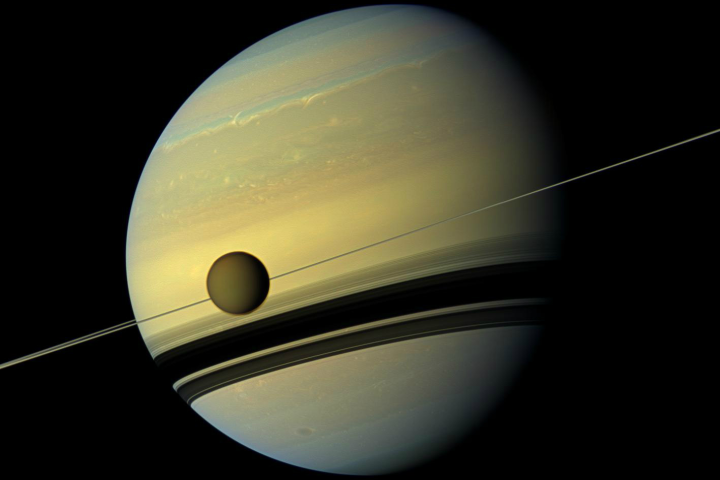There’s a mystery about Titan, Saturn’s largest moon, that has been puzzling astronomers for many years — where did its thick, nitrogen-rich atmosphere come from? Titan is the only moon in our Solar System to have such a thick atmosphere, which is more than seven times as massive as Earth’s atmosphere when adjusted for surface area. It creates a haze around the moon which blocks most of the Sun’s rays and makes it hard to see its surface.
The atmosphere is made up mostly of nitrogen gas but it also includes five percent methane, which is unusual. Typically, methane reacts in the atmosphere relatively quickly to form organic compounds which fall to the surface of a planet or moon. But Titan’s atmosphere still has methane in it, which means that either the methane is being replenished somehow, or that we happen to be looking at the atmosphere during a unique period of high methane levels.

Now data gathered from the European Space Agency’s Rosetta spacecraft has shed light on this question. “Because Titan is the only moon in our solar system with a substantial atmosphere, scientists have wondered for a long time what its source was,” lead author Dr. Kelly Miller, research scientist in the Southwest Research Institute’s Space Science and Engineering Division, said in a statement.
The study posits that the atmosphere on Titan is generated in part by the “cooking” of organic material in the moon’s interior. The core of Titan contains dense, organic-rich rocky material which may have come from a smaller body left over from the building blocks of the Solar System, so scientists looked at how much gaseous material could be produced by materials like those in the core. The new data suggests that approximately half of the nitrogen atmosphere and potentially all of the methane could have come from the rocky material at the heart of Titan being heated and releasing gases.
“The main theory has been that ammonia ice from comets was converted, by impacts or photochemistry, into nitrogen to form Titan’s atmosphere. While that may still be an important process, it neglects the effects of what we now know is a very substantial portion of comets: complex organic material,” Miller said. “A lot of organic chemistry is no doubt happening on Titan, so it’s an undeniable source of curiosity.”
The study is published in The Astrophysical Journal.



